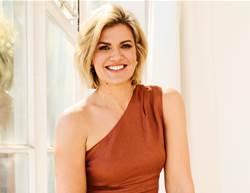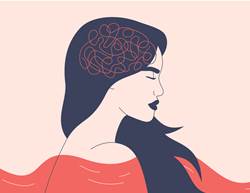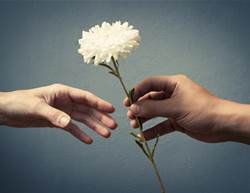When I catch up with Tammin Sursok over Zoom, it’s late evening at her home in Nashville, Tennessee, following “one of those days” with her kids in which coughs (and, potentially, conjunctivitis) have reared their inconsiderate heads. We first met at Prevention’s cover shoot a week earlier during one of Tammin’s frequent visits to Australia. Born in South Africa, Tammin, 41, grew up in Sydney, where she became a household name starring in Home and Away from 2000 to 2004. Relocating to the US after leaving the popular soap, Tammin cemented her name overseas on TV shows such as The Young and the Restless, Hannah Montana and Pretty Little Liars.
Married to US producer and director Sean McEwen since 2011, Tammin has felt more of a pull to spend extra time Down Under since having her daughters, Phoenix, 11, and Lennon, five.
Tammin also has several projects pulling her back to our shores, including her successful podcast ‘The Sh!t Show’, in which she chats to high-profile Aussies about the ins and outs of their lives. The talented actress has become somewhat of a force in the podcast world. She also co-hosts the ‘Pretty Little Liars: True Crime’ podcast. No newcomer to the medium, she also had great success with her first podcast, ‘Women On Top’, which launched several years ago.
“When I had my first child, I felt very lost and isolated,” she admits. “No one was talking about the shame and guilt that sometimes surrounds being a parent, when you feel like you’re not doing it right… all these things where I was like, ‘I want to talk about this.’”
Tammin’s trademark is her frank, no-holds-barred discussions. A naturally open person, she found her audience responded overwhelmingly to her honesty about sharing life’s more challenging moments. “I remember the first time I mentioned having a miscarriage,” she recalls. “I was so afraid to share, but when I did, so many other people said, ‘Oh, my goodness, that’s happened to me.’ And I’m like, ‘Wow, I’m not alone in this.’ That’s the reason I share, because I don’t want other people to feel suffocated by their own pain and experiences.”

Addressing anxiety
Tammin’s candidness about her anxiety is just another example of her determination to share her ‘warts and all’ experience of life – which is somewhat ironic, given she admits a lot of her anxiety comes from perfectionism and people pleasing, that feeling of, “if they’re not happy with me, there’s something wrong with me.”
Tammin says these days her anxiety “comes and goes, and I’ve just learnt how to live with it.” A trick that helps when her feeling of unease is at its worst is to set a timer on her watch. “I never normally feel that intense burst of anxiety for more than 25 minutes, so I know that in 25 minutes it’ll go away.” She adds that movement is hugely beneficial to counteract her anxious thoughts. “There’s something about the brain and walking that calms you down. [Anxiety] used to paralyse me. Now I just kind of keep going while it’s happening and then it gets better.”
Those elements of anxiety, people pleasing and perfectionism were also very much interwoven into Tammin’s issues with eating disorders in her younger years.
Overweight as a child and early teen, she was subject to cruel and relentless bullying about her figure. “I still don’t understand why we talk about women’s bodies,” she says now. “We literally almost never talk about men’s bodies, but women’s bodies are all we talk about.”
It was the pain of being bullied that first prompted Tammin to lose weight – and initially she approached weight loss very healthily.
“I remember I’d read in some magazine how to lose weight: by having low-glycaemic index carbohydrates, like oats, in the morning, salad at lunch, and protein at night.” As well as walking for 30 minutes and drinking two litres of water daily, Tammin lost 50 to 60 kilos in just six months.
“And then within about two months, I was on Home and Away, and on the covers of magazines as the ingenue,” she recalls. “But my brain hadn’t caught up. I still felt like I was a girl who was being made fun of and bullied.”
At the age of 17, it caused a very unhealthy switch to flick in her head. “It was like, ‘If I gain weight, I’m going to lose all this attention, all these people who now love me because I look a certain way,’” Tammin says. “So then I just stopped eating at 17. From 17 to 23, I was in an on-off, not-eating, bulimia, overeating, not-eating cycle.”
It took the meeting of her future husband at age 23 for Tammin to finally conquer her inner food demons once and for all.
“I was on the border of getting better, and I fell completely head over heels for [Sean] in a different way to any relationships I’d been in,” she says. “I had a bulimia episode in the beginning of our relationship and I remember silently looking at him and thinking, ‘I don’t want to be sick anymore.’ I was done with lying and being secretive about food. And so, by 24, I never [had a bulimia episode] again.”
Listening to her body
Tammin now has a balanced and healthy approach to eating. Following a meat- and alcohol-free diet, her preference for healthy whole foods is, she says, linked to eating intuitively.
“I learnt what made me feel good,” she says. “Sweets, overprocessed foods, alcohol, white rice, all those things would make me tired, anxious and depressed. So I started eating for my mental health. I knew two boiled eggs on gluten-free, seeded low-GI toast was going to make me feel so much better mentally than coffee and a piece of fruit on the run. At some point, I just knew what my body needed.”
She adds: “Most of the time, people eat things that don’t make them feel good to numb something else.” Instead of eating when she felt anxious and depressed, Tammin explains she’d “go to meditation, go walking, call a friend, or have a bath. I wouldn’t go, ‘Okay, I’m now going to eat two Cadbury bars, trigger myself, sit on the couch, then hate myself because now my body doesn’t feel good.’”
Slaying self-care
Engaging in regular movement is also an essential aspect to the self-care prioritisation that Tammin has mastered so well. This includes trying to hit 10,000 steps daily, strength training and the occasional HIIT class “near my ovulation, which is when you should be doing more cardio-based activities”.
A weekly yoga class is also part of the mix, “for mental health, strength… there are people in my class who are 60, 70, and I look at them like, ‘I want to make sure I’m able to move like that.’ You really have to start thinking about that stuff. It’s like investing in stocks: you have to do it earlier.”
Therapy is the final part of the self-care puzzle. Although it’s a common practice in the US, the actress muses as to why therapy still has some stigma attached in Australia. “You learn how to process things, how to react a different way, how to make good decisions, how to change your thought processes, how to not catastrophise, to stop black-and-white thinking. If we all had therapy once a week, it’d be a very different world!”
For the full article, grab a copy of the January 2025 issue of Prevention Australia from newsagents and supermarkets now.
If you feel like you are struggling, call Lifeline on 13 11 14.



.jpg&h=90&w=90&c=1&s=1)






